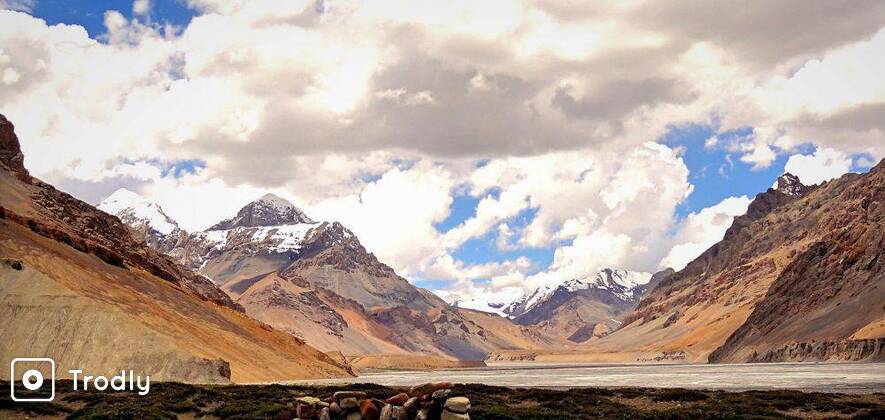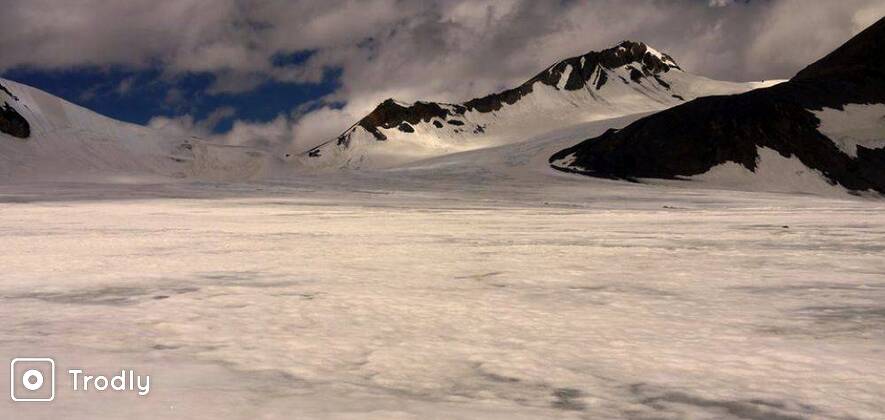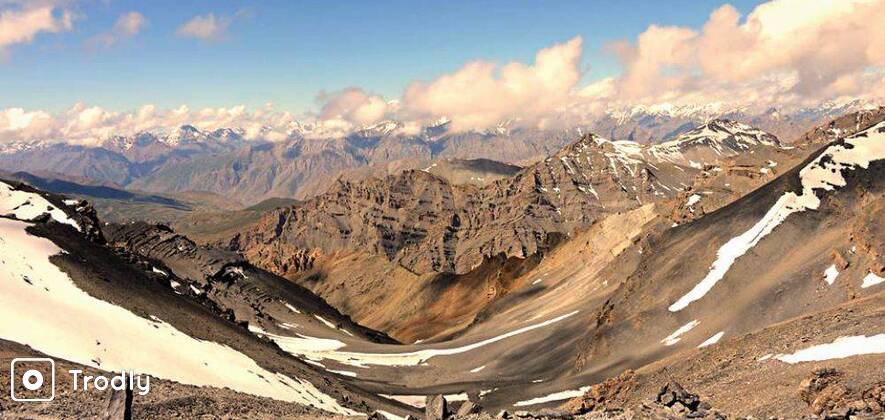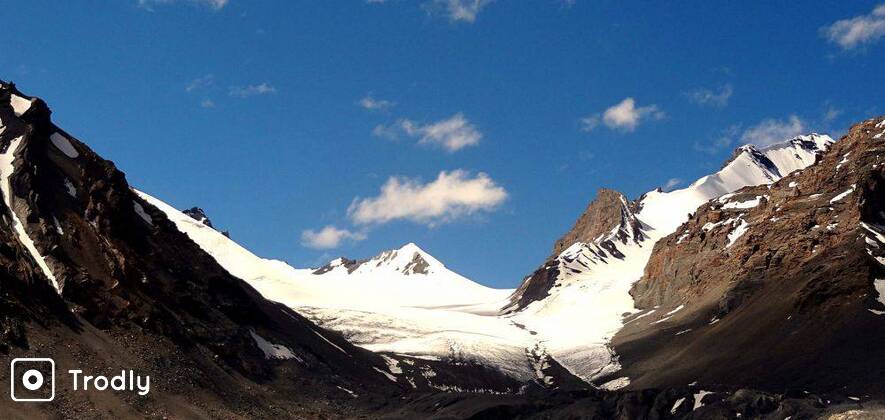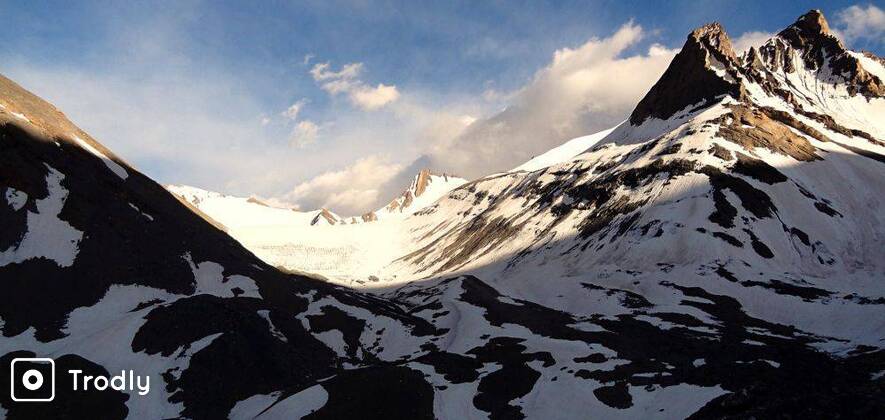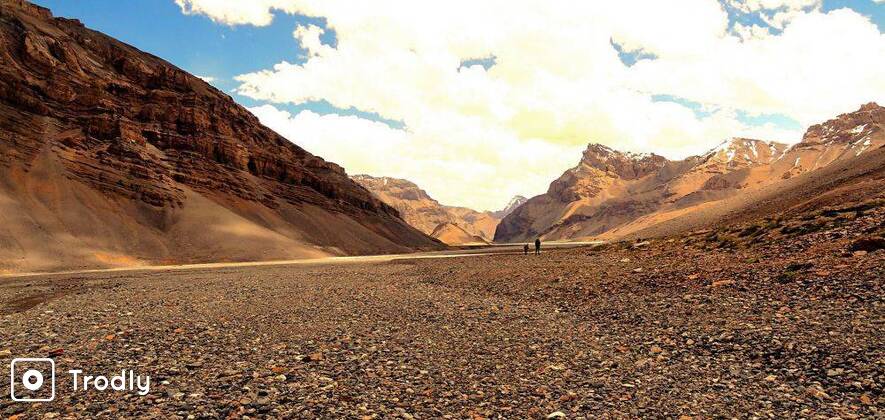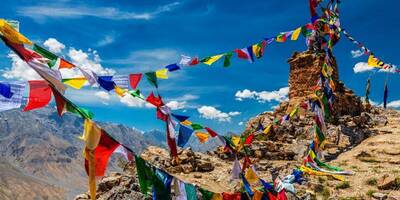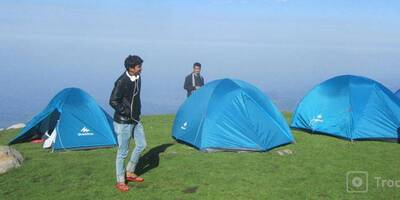Team Mountaineerz will be happy to welcome you at Manali for the Double Crossing trekking and receive you at the airport/bus terminal. We will settle you in at our Base in Manali. Unwind and take in the environs. Walk around and initiate the process of acclimatization in the Himalayas. Go through your checklist and finish off last-minute essential shopping for the trek. It is advisable to trek light with special import on the clothing and gear.
Reach dA Base for a “round the bonfire” conference with the other climbers and the team members of Mountaineerz who would be your guides on the expedition. Break the ice with some great dinner and chill with your fellow climbers.
Make sure you drill your guides and instructors with any questions or doubts you may have pertaining to the trek. They will be happy to answer your questions and share with you a few tricks of the trade and tips to make your adventure a happy and successful one.
Mountaineerz only has a few asks of you…
Please ensure, for your trekking pleasure you pack light and only the absolute essentials.
We humbly ask you to cooperate with your guides and instructors while on the trek. Remember, they only have your best interest in mind and any decision they take is taken keeping your safety and the success of the expedition in mind. Be patient and respectful towards your fellow climbers. Remember, up there, you only have your wits and your fellow climbers.
Remember to get your camera along.
Day 02: Manali – Prini – Jobri – ChikkaPhase 1 of the Double Crossing Trek begins today with the Hampta Pass trek. The trail alternates between thick forests and open grounds to Chikka. The trek crosses many glacial streams over improvised wooden bridges. Beautiful snow-capped peaks are visible from Chikka. From here, we will get an excellent view of the Deo Tibba and Indrasan group of peaks. We arrive at Chikka by lunchtime. Say in comfortable tents.
Day 03: Chikka – Bhalu ka Ghera (3597 mts) 4 hrsThe trail continues to the alpine meadows which are full of interesting flora, crossing stream at Juara, glacial features of the surrounding mountains can be seen along the way. Bhalu ka Ghera, also known as the Bear’s Circle, is the place where brown bears are said to hibernate during winters and during the right time of the year, several species of wild flowers can be seen. It is a beautiful camping spot and we will camp here for the night.
Day 04: Bhalu ka Ghera – Hampta pass (4298 mts) – Shiya Goru (3597 mts): First pass on the Double CrossingStart the day early by climbing up for about 2 km up to the Hampta pass (4270 mts) while walking on the snowfields. It is now time to get shutter happy with your camera. The final ridge is a little steep to climb and when snow-bound you will you will have to cut steps in the ice up the pass. The view from here is jaw dropping. The peaks of in Lahaul, particularly in the Kulti valley and of the Chandrabhaga group, are seen as a huge cluster, with peak of Mulkila IV raising its head above them. From top of the pass you can see the majestic Mt. Deo Tibba (6001 m), Indrasan (6221 m) and the mighty Greater Himalayan and Pir Panjal Range. A short descent leads to the campsite at Shiya Goru. We will camp in a beautiful meadow by the stream.
Day 05: Shiya Goru – Chattru (3600 mts) – Batal – ChandertalToday’s trek begins with crossing a small stream and a walk following the valley stream down to the mighty River Chandra. The descent to River Chandra is a bit steep and follows a long ridge. Once in the valley you will rejoin the road which crosses the bridge across the river to Chatru. However gentle the river appears, do not try to ford the River Chandra. This deceptive river has swept away many trekkers trying to take a shortcut. Arriving by the side of Manali-Spiti road at Chattru, we will board the waiting vehicles and drive to Chandertal.
There are lovely views of the “Chhota Shigri” (small glacier) and “Bara Shigri” (big glacier) along with several high peaks of the Chandrabhaga Range. From Batal onwards it can be very windy as the valley opens up here. The road climbs steeply around many bends to Kunzum La in the east. This road leads to Spiti valley. There is a new footpath leading from Kunzum La that descends to Chandertaal, however the more direct approach is the road from Batal, going into the Chandra valley in the north. We will be driving along the left bank of River Chandra after crossing a bridge near Batal. The trail continues for about 14 km to the scenic campsite at the bank of Chandertaal, from here you can see the panoramic view of the Chandra-Bhaga Range. Later we will drive to Kaza over the Kunzum La Pass.
Day 06: Chandrataal – KazaAdventures of this day include exploring Kaza and Kibber (4,205 mts). Enjoy a hearty breakfast and explore the ancient Ki Monastery and Kibber Village.
Day 07: Rest and Acclimatization. After inner line permits and shopping at Kaza, drive to Chicham Day 08: Chicham – Dumla – Thaltak (4693m) – 7 hrs. TrekDouble Crossing Trek phase 2 begins today. The trail starts from Chicham, arrowheads north and steeply drops into the gorge of River Parilungbi. It moves on to a bridge and climbs through cultivated fields onto a carved rocky area. This path then leads to the Thaldak (4,875 mts) camping site. This is where we will pitch our tents for the day. Have some much-deserved dinner before snuggling into your sleeping bags.
Day 09: Thaltak – Boroghlen (5100m) – 12 km, 7 hrs. TrekPack up your bags and buckle up for another day of amazing sights. The trail from Thalda is sandy in parts and descends while crossing a moraine to the river gorge. Meandering on through to the gorge, the trail leads onto Jagtha. After this, the trail ascends and climbs steeply to a point where two glaciated valleys meet. We will take the opening facing north. After trekking for about a kilometre, we will cross the moraine and head to the camping site at Boroghlen (5180 m). Pitch your tents here.
Day 10: Boroghlen – Parangla (5578 m) – Kharsa Gongma(4850m) –14 km, 8 hrs. TrekAfter breakfast and some stretching, we start ascending the scree and snowy landscape. The trek here entails steep sections before we reach Parang La, so necessary care needs to be taken will negotiating the crevasses. From here, there is a clear view of Parilungbi (6160 m), Shilla (6111 m) and Gya peaks (6794 m). To the north, is a descent of 4 km along the glacier, which leads to the origin of the River Pare Chu.
We will keep moving on to the right face of it and navigate our steps through boulders and scree and finally, on to the Pare Chu belt. This will lead to the camping site at Karsha Gongam (5,150 mts). Camp here for the night after dinner.
Day 11: Kharsa Gongma – Thakote (4700m) – 12 km, 5 hrs. TrekThe trek to Thakote can be slow to negotiate as this stretch of about 12 Kms runs along slide the river and many side streams need to be navigated. After crossing Parang La, we will come across many small spots such as Dogpo Phirtse, Dotung and Dakarkuru. We will camp for the night at Thakote (4,900 mts).
Day 12: Thakote – Umdung (4750 m) – 20 km, 7 hrWe religiously follow the roller coaster trail which runs along parallel on the right side of the River Pare Chu. On the way, are many side inlets and it goes up & down a few times before it reaches Umdung (4,750 mts). This is where we will pitch our tents.
Day 13: Umdung – Chuntung – besides Tsomoriri Lake (8 hr)Leave Umdung and head on to Tso Moriri. A trek of few minute from Umdung, will lead the trail to ford the ferocious River Pare Chu and on to Narbu Sumdo (4,663 mts). Singe Namgyal built a fort here in the 17th century and its ruins stand even today. This is where one also gets to witness the first signs of human existence – the Drukpas with their yaks and thousands of sheep & Pashmina goats. We will also see the hardcore tribal life style of the Changpa tribe with their rugged, woolen tents.
Welcome to the wilderness that is Rupshu valley. The trail will now suddenly move away from the river. It meanders along a smaller and secondary stream through a grassy meadow and finally arrives at the campsite at Chumiksthal.
From her, the trail moves on to Phirtse Phu and passes through an expansive valley to reach Chuntung village (4,542 mts). This is where we get the first sightings of Tso Moriri. On the southern shores are some old and ruined houses. The lake is surrounded with snow capped mountains and has hues of a brilliant blue. We will camp here by the lake.
Day 14: Chungtung – Chakardung (4588m) – 14 km, 5 hrs. TrekTrek around and explore the surreal environs of the lake at your own pace. If you are lucky, you might even see some migratory birds. Trek on to Chakardung (4,542 mts) and pitch tents to camp.
Day 15: Chakardung – Karzok (4615m) – 21 km, 8 hrs. TrekGuess what! Another day in paradise. Trek alongside the lake and reach the village of Karzok (4,540 mts). It is an extremely remote village and chiefly inhabited by nomads. Visit the monastery and mingle with the locals. Camp here in the nomadic village and this brings us to the end of the trek but the adventure goes on…
Day 16: Karzok – LehThe trek is over.
Now, get ready for one scenic ride to Leh. Reach Leh in the evening. Relax and unwind after the long trek and explore the town of Leh in the evening.
(Stay in Leh - optional at extra cost)
Transport to Leh in shared vehicles. Cost at actuals would be divided among participants
Optional Extensions available to explore Leh, Lamayuru, Nubra Valley, Turtuk or Pangong Tso
Read an article by one of our guests - https://yoloo.life/parang-la-trek-spiti-to-ladakh-trek-blog/

